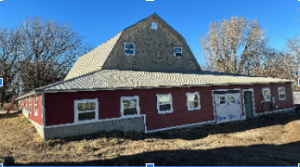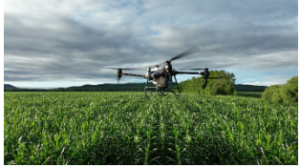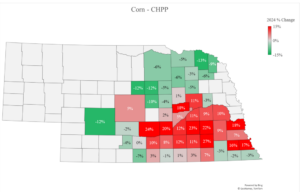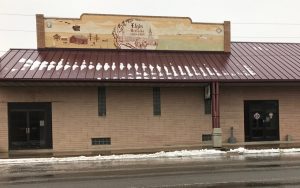Today, we’re going to continue our discussion of the PRF, or the Pasture, Rangeland, Forage insurance policy. This is a policy that RMA has designed to help livestock producers with preserving cash flow to help buy feed for grazed cattle or replace lost income from haying in times of low rainfall.
To help you better understand how PRF works, we are going to walk you through a PRF quote. The first thing we have to do is find the location, tract, or ranch on a grid the RMA has produced. These grids are 17 x12 miles long and cover the 48 contiguous states.
To find the location of the grid, or grid ID, we use RMA’s Pasture, Rangeland, Forage support tool. To find a specific grid ID, we go to the search bar, and type in the location, ranch, or tract in the search bar. For this example, we will look for a location near Ericson, NE.
We type Ericson, NE in the search bar, and we come up with the grid ID. 26226. We zoom in on the map, and it will show us our location.
These red rectangles are the outlines of the grids. In this case, the grid encompasses both Ericson and Bartlett. We’ll choose a location within this grid to look at.
Our next step is to go to the RCIS, PRF quoting system. Where we’ll enter the appropriate data to pull up the quote. The crop year we’re looking at is 2021, the state is Nebraska, the county is Wheeler. The crop is Pasture, Rangeland, Forage. It’s a rainfall index plan.
We have a choice between hay and grazing. We’re going to look at the grazing option in this case.
We can choose between a 70 or 90% level for insurance. Our index of 100 is normal rainfall. We choose the level that we want to insure for, up to 90%. We’ll choose 90%. If the rainfall is below 90% of the index, we will start getting paid.
Productivity factor is a factor that will adjust how many dollars you want to insure each acre for. I’ll explain that further after we do the quote.
We also need to put the grid ID in there, which I forgot to do. So we’ll enter 26226, which is the ID we found in the previous step. This next step identifies the time periods that are available for a quote. January/February, February/March, March/April. And so on, throughout the year, for two month periods.
We must select at least two periods, and they cannot overlap. So in this case, we could select January/February, or March/April. But for the purpose of this quote, we’ll have 20% in each period, which will help us make our decision later on.
This is the quote generated by the RCIS quoting system. I’ll take you through some of these values, and explain what they are. The value here of $22.60 is a value that’s RMA determined to be the average value of grazing land in Wheeler County.
We’ll use productivity factor of 150 to increase the insured value to $30.51. The current line is the two month time periods that are available. We have to choose at least two periods, and they cannot overlap. So we cannot choose January/February and February/March. We could choose January/February and March/April.
We’ve allocated 20% in each period. Producer premium per acre is the premium per acre that the producer paid for each acre. In this case, if he bought January/February, he would pay 58 cents per acre. If he bought June/July he would pay 41 cents per acre. So if he bought five periods at 20%, you would total those five periods to get your total cost.
The indemnity total, we’re looking at a 20 year summary here. The indemnity total is how many dollars you would get paid over these 20 years for this period. In this case $20.48.
This is the total premium you would have paid in those 20 years, $11.60. So over a20 year period, you would have received $8.88 more per acre than you paid in premiums. So the indemnity as percentage of premium is 177%.
The reason this is possible is because the government has paid 50 to 60% of your premium. As you look at the slide here, you’ll see the different periods and different percentages. January/February is 177, March/April is 121, June/July is 200%. So in June/July you would have paid … You would receive $16.40indemnity, while paying $8.20 a premium.
These lines here show how much indemnity you would have received during these periods for each year, over the last 20 years. So in 2020, in February, you would receive a payment of $1.47 per acre. In May/June you would receive $1.17.
You get to August/September, which is really dry, you would receive $4.48 per acre. In September/October you would receive $4.78 per acre.
2002was another very dry year. Where they received 22% of normal rainfall in January/February. And July/August they received 72% of normal rainfall.
If you would like any more information about how PRF could work for you, please go to our website at midplainsag.com, or give us a call at 402-843-5342. You can also email us at info@midplns.com. We would be happy to prepare a quote for you or answer any other questions you have.
Thankyou for watching our video.





